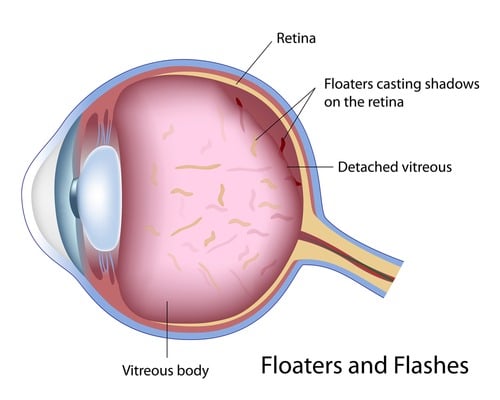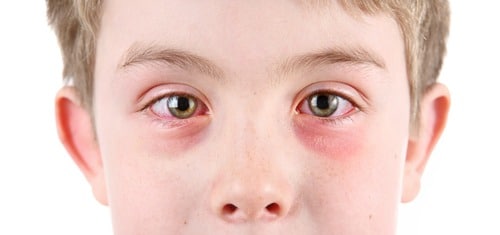What Causes Eye Floaters?
Wonder why you’re seeing black or grey specks, or “cobwebs” in your vision? Let’s talk about eye floaters
What Causes Eye Floaters?
In order to discuss what causes eye floaters, let’s first define them.
An eye floater is a spot in your vision that may appear as:
- black or grey specks
- black or grey strings
- cobwebs
The spots in your vision may drift when you move your eyes, and dart away when you try to look at them directly.
Who is Most at Risk of Experiencing Eye Floaters?
Individuals most at risk for eye floaters are typically over 50 years of age. A few additional risk factors include:
- nearsighted
- recent head or eye trauma
- diabetic retinopathy
- eye inflammation
What Causes Eye Floaters?
Age-Related Changes
As you age, the vitreous, a gel-like substance that fills about 80% of your eye, slowly shrinks. The vitreous’ main purpose is to help your eye maintain its round shape. As it shrinks, it becomes stringy, and the strands can clump and cast tiny shadows on your retina. These shadows are floaters.
In most cases, floaters are a natural part of your eye’s aging process. While distracting at first, they will eventually settle below your line of sight.
Other common causes of eye floaters are more serious than age related changes. If you’re experiencing a floater every now and again there is no cause for concern, but if you see a whole slew of floaters accompanied by flashes of light, you should seek immediate medical attention. A small handful of these emergency situations are listed below.
Inflammation
Inflammation in the back of the eye causes the release of inflammatory debris into the vitreous, which are seen as floaters.
Bleeding
Blood cells in the eye caused by diabetes, hypertension, blocked blood vessels and injury are seen as floaters.
Posterior Vitreous Detachment
A study published in Opthamology showed that of individuals experiencing sudden eye floaters and flashes of light, 39.7% of them had posterior vitreous detachment – a condition in which your vitreous pulls away from your retina.
Retinal Detachment
If left untreated, a posterior vitreous detachment can quickly become a retinal detachment. As the vitreous tugs on the retina, it causes a small tear or hole. Vitreous enters the tear and pushes the retina further away from the inner lining of the back of eye. Research has shown that up to 50% of people with a retinal tear will develop a retinal detachment, leading to significant vision loss.
During a detachment, the patient has approximately 24 -48 hours to fix it or risk permanent loss of vision and possibly the entire eye. Most offices, like ours, have a 24/7 emergency phone number allowing you to speak with a doctor regarding conditions such as retinal detachment. Call your doctor as soon as you start experiencing a retinal emergency – do not wait until a weekend or holiday is over!
How Should I Treat Eye Floaters?
If you’re unsure of the severity of your eye floater, it’s best to schedule an exam and consult with a doctor. As mentioned above, in most cases the doctor will be able to provide you with peace of mind that your floater is just a symptom of age. In other cases; however, your doctor may recommend treatment.
One of the most common eye floater treatments is laser vitreolysis. During this procedure, a laser is projected into the eye through the pupil to target the floaters and break them apart.
Some common factors that determine whether laser treatment is right for you include your age, when your symptoms started, what your floaters look like and where they are located in your eye.


